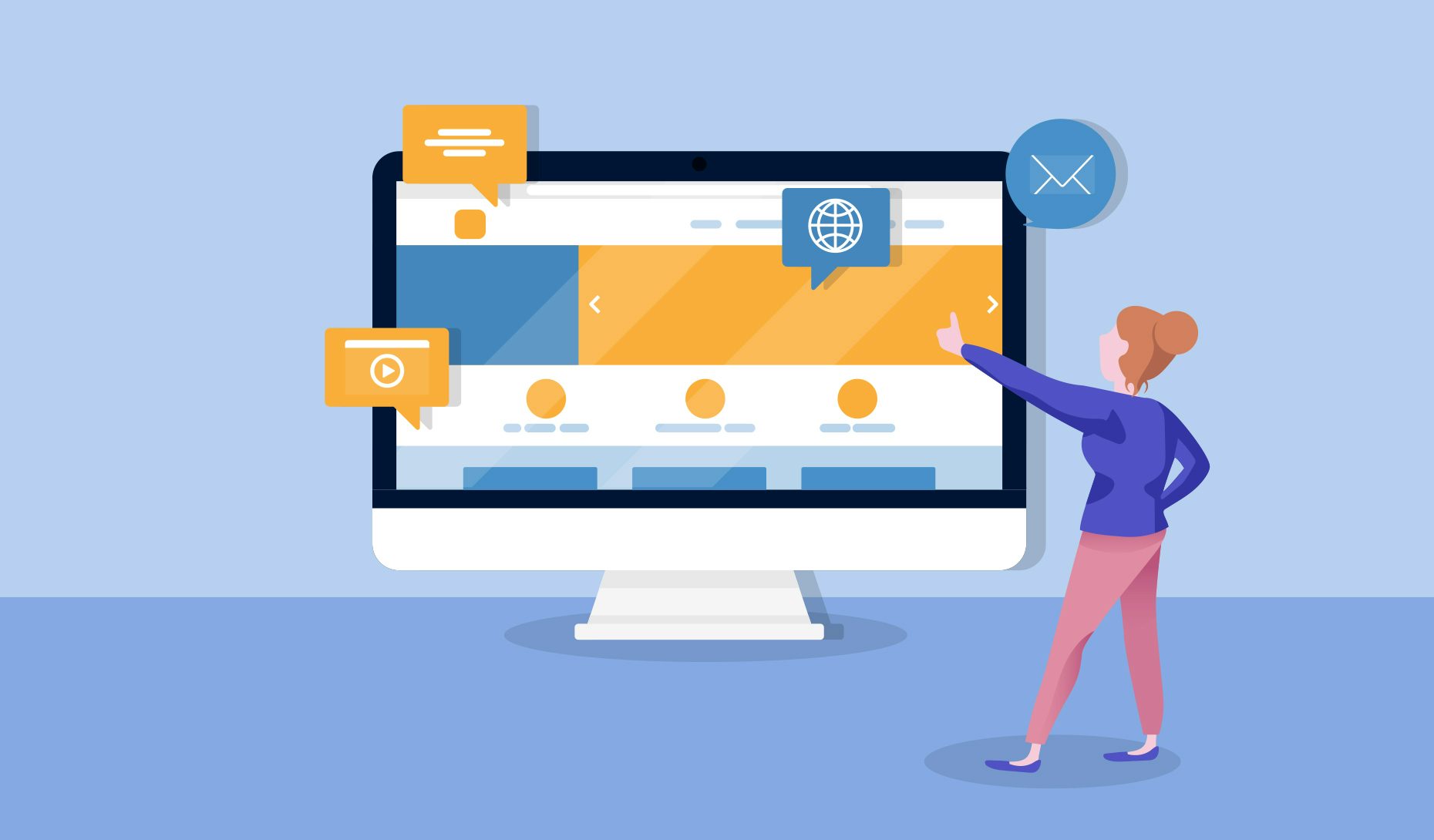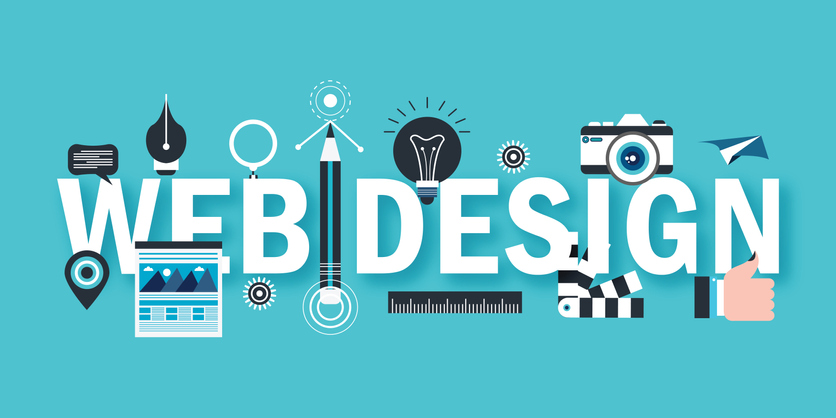Proven Strategies for Enhancing Your Website via Superior Web Design
The Comprehensive Overview to Crafting Visually Appealing and Practical Web Design That Meets User Needs
In today's electronic landscape, the significance of crafting web styles that are both functional and aesthetically appealing can not be overemphasized. By focusing on user-centered design principles, designers can develop experiences that not only attract yet additionally maintain user interest. Secret visual aspects such as balance, contrast, and placement play a vital role in this process, while the requirement of responsive design makes certain access throughout numerous devices. The trip does not finish with preliminary style; continuous testing and iteration are important for improvement. What approaches can one use to efficiently stabilize these parts?
Comprehending User-Centered Layout
At the heart of reliable web design lies the concept of user-centered style, a philosophy that focuses on the demands, choices, and actions of customers throughout the development procedure. This technique includes extensive research to recognize the target market, making sure that the final item reverberates with its designated users. By including individual feedback at every phase, designers can create interfaces that are not only aesthetically attractive but additionally practical and instinctive.
User-centered style emphasizes compassion, requiring developers to step right into the users' footwear and consider their perspectives. Strategies such as individual personas, trip mapping, and usability screening are employed to recognize pain factors and chances for improvement. This repetitive procedure enables continuous improvement, as designers adjust to progressing user requirements and technical innovations.
Integrating user-centered layout results in raised individual satisfaction and interaction, ultimately resulting in greater conversion prices and brand commitment. It cultivates a collective environment where stakeholders, consisting of users, designers, and programmers, collaborate to achieve a shared vision. By putting customers at the center of the design process, companies can develop web sites that not just meet service purposes but additionally provide rewarding and meaningful experiences for individuals.
Trick Principles of Visual Style
Effective visual style offers as the structure for developing straightforward and engaging sites. It includes numerous key principles that lead designers in crafting visually pleasing and useful user interfaces.
First, balance plays a critical function in attaining aesthetic harmony. Designers must disperse elements uniformly throughout the format to avoid overwhelming individuals. This can be attained with unbalanced or balanced layout methods.
Following, comparison enhances readability and accentuates vital elements. By utilizing varying shapes, colors, or sizes, developers can produce prime focus that direct customers via the content.
In addition, alignment is essential for arranging details. Regular positioning of message and images promotes a tidy layout, improving total navigation and customer experience.
Proximity additionally contributes to aesthetic clarity. Organizing related products with each other aids customers in comprehending the partnership between various elements, making the user interface more instinctive.
Finally, uniformity in design components, such as typefaces, styles, and shades, strengthens brand identification and aids individuals navigate the website extra easily. By incorporating these key principles of visual layout, web developers can produce interfaces that are not just visually attractive but likewise functional and user-centered.
Value of Responsive Design
Receptive layout is a vital aspect of modern-day internet development, making certain that sites This Site operate seamlessly across a range of tools and screen sizes. As the internet landscape progresses, the diversity of devicesâEUR" varying from smartphones to tablet computers and desktop computer computersâEUR" necessitates a style technique that suits all users.
Applying receptive layout allows for a versatile format that automatically adapts based on the individual's display measurements. This flexibility not just enhances availability however likewise enhances functionality, as individuals can engage and browse with the site effortlessly, despite their device.

In addition, receptive style decreases the demand for keeping numerous versions of an internet site, streamlining updates and content monitoring. This effectiveness translates right into cost savings and a more natural brand experience throughout systems.
Enhancing Customer Experience
User experience (UX) is a critical part of website design, affecting how site visitors interact with a site and perceive its value. A well-crafted UX ensures that users can navigate intuitively, find details conveniently, and attain their objectives effectively. The style needs to take into consideration the customer's trip, from the minute they come down on the website to the conclusion of their preferred activity, whether that be purchasing, enrolling in a newsletter, or accessing info.
Secret aspects that boost UX consist of clear navigating, receptive formats, and appealing visual material. Uniformity in design aspects such as buttons, colors, and typefaces fosters knowledge, making the internet site feel natural. Additionally, enhancing tons times is vital; customers are much less likely to remain on a site that is sluggish to react.

Checking and Iterating Designs
Checking and repeating designs are fundamental procedures that comply with the first production of a site, ensuring that the user experience remains at the center of any modifications. These phases include collecting individual feedback, analyzing layout efficiency, and making informed alterations to enhance usability and involvement.
Use screening permits developers to observe actual users as they interact with the site, determining discomfort points and locations for enhancement. Individual studies can offer qualitative insights, capturing individual views and choices.
Continuous version cultivates an adaptive style technique, where the internet site advances in action to individual actions and comments. By devoting to extensive screening and model, designers can produce an internet site that not only meets visual standards however additionally provides a satisfying and smooth customer experience.

Conclusion
In final thought, effective internet layout necessitates the assimilation of user-centered principles, vital aesthetic layout aspects, and receptive structures to produce interesting interfaces. By prioritizing user needs and executing continuous testing and model, developers can improve their productions to improve overall complete satisfaction. The dedication to these methods not only cultivates a visually attractive aesthetic however additionally guarantees capability across varied devices, eventually adding to a positive individual experience and boosted engagement.
By prioritizing user-centered design principles, developers can create experiences that not just draw in but also maintain user passion.At the heart of efficient web style lies the concept of user-centered layout, an ideology that focuses on the needs, you could try these out preferences, and behaviors of individuals throughout the development procedure. By placing customers at the center of the design procedure, companies can produce web sites that not only meet organization purposes yet additionally offer fulfilling and meaningful experiences for customers.
By prioritizing user requirements and preferences, internet developers can produce experiences that are not just aesthetically appealing yet also useful, eventually promoting user satisfaction and loyalty.
Customer studies can provide qualitative insights, capturing customer sentiments and preferences.